Introduction
As far as we know, the Nabataeans were not great writers of books. Very little literature has passed down to us. We have no literature from the early years, and the famous Petra Scrolls date from the Byzantine Era. While they contain only legal documents, these scrolls give us a glimpse into the life and times of Petra during the Byzantine era, and give us an excellent database of Nabataean words.
The main source of Nabataean writing comes from inscriptions made on tombs, and from graffiti written on rocks and boulders throughout the Middle East. It seems that Nabataeans and other tribes would scratch their names and sometimes a message, such as a lament for a loved one, on the rocks. These inscriptions are now being cataloged and much is being learned from examining them.
It is interesting to notice, however, that the Nabataeans must have had a high degree of literacy, for many of the inscriptions were written by shepherds. Historians tell us that literacy was not as widespread among other peoples at the same time.
It seems that the Nabataeans created a new writing form to add to those in use in the Middle East of their day. They developed a running “cursive” or semi-ligatured script, which was used for both lapidary inscriptions and the more common graffiti. This writing form would later evolve into the “Arabic” writing still in use by Arabs today.
The Nabataean language seems to have been a variant of Aramaic with a strong Arab influence in it. However, archeologists have not come to any solid conclusions concerning the Nabataean language. Other Arabian languages include Lihynaite, Safaitic, Thamudic, Himyarite, Minaean, Qatabanian, Sabaean, and Palmyrene. The problem is that two of these languages are very similar to Nabataean in a number of ways. Safaitic and Thamudic have a different script to Nabataean, but they seem to be very similar languages. What is confusing is that the people who wrote in these other scripts had the same gods as the Nabataeans and often had the same names as Nabataeans. The people who wrote these languages were so similar that some archeologists have wondered if the three scripts were used by the same people for the same language. Was there one script for common people, one for religious leaders, and one for merchants? Were there three different groups of Nabataeans each with their own dialect? Or, do the three dialects tell us that there were three distinct tribes, who were closely related in many other ways, such as culture and religion?
When the Nabataeans sent their famous diplomatic letter written to Antigonus, Diodorus the historian notes that it was written in ‘Syrian letters’ (XIX.96.1). Syrian in this context is no doubt, Aramaic, the trade language used at that time by the Seleucids. This is important to note, because it demonstrates that the Nabataeans were capable of producing a letter in another language.
However, when one considers that the Nabataeans were merchants, importing, exporting, and marketing such important commodities as bitumen and frankincense, we must realize that they would have been able to write contracts, receipts, and letters of agreements. In order for them to buy in distant lands and sell in distant lands, members of their community must have mastered many different languages.
Years ago, while working in the Arab Gulf, I met a young man from Baluchistan who had mastered seven languages. He could easily translate back and forth between these languages, and most amazingly of all, he did not consider his skill particularly unique. Members of his community had always learned to deal with multiple languages. Likewise, one would assume that many of the Nabataeans learned a variety of languages, and that these languages would have had an impact on their own native tongue, just as their culture had been impacted by the customs of other civilizations.
Nabataean Script
The Nabataean language is closely related to old Arabic. The Nabataean alphabet is related to Arabic, Aramaic, Hebrew, Kharosthi, Phoenician, Sabaean, Samaritan, South Arabian, and Syriac. (Follow the links above to various charts of what these scripts looked like.) It is quite commonly accepted that the Nabataean script was developed from Aramaic abjad during the 2nd century BC. Stone inscriptions in the Nabataean script have been found in the various Nabataean cities in the Negev, in Wadi Rum, the city of Petra, and in Meda’in Saleh. During the 4th and 5th centuries AD, Nabataean script evolved into the Arabic alphabet. It is written from right to left in horizontal lines

Nabataean Script
The chart above was borrowed from [](http://www.omniglot.com/writing/nabataean.htm)[https://www.omniglot.com/writing/nabataean.ht](https://www.omniglot.com/writing/nabataean.htm)m Check them out for more ancient writing systems.
Graffiti
There are many things that archeologists have learned from Nabataean graffiti. They have developed a database of as much graffiti as possible and now they are beginning to compare the various messages that have been scratched in stone.
From this database, they have been able to compare the various Nabataean names. Since they are working with over 20,000 pieces of graffiti, popular names can be discovered, as well as patterns of names dealing with gods, events, and locations.
For example, a name like Paran was given to people born around Paran, the most important oasis in southern Sinai (biblical Paran). ‘Adnun, a personal name, is based on the name of the first ancestor of the southern Arabian tribes. Names such as ‘Amat, ‘Aphityu, Hana, and Zabin might be slave names.
In Southern Sinai there are a number of names derived from Cain, such as Ibn al Cain, etc. The name Cain means smith or artisan, and can be compared with Genesis 4:22, where a man named Tubal-cain was the master of all coppersmiths and blacksmiths.
Numerous Nabataean inscriptions have been found in the vicinity of the copper smelting site at Wadi Nasb. There the name Waqilu is quite common, meaning steward, manager, or deputy. Many names seem to denote the skill or class that the person held. For instance, Nashgu is a common name, meaning weaver, and Shumrahu means branch of a palm tree laden with dates.
In the Sinai there are names including some element of the god Ba’al, such as Ushba’al (gift of Ba’al), Garm’alba’ali (Ba’al has decided), Thaim’-alba’ali (servant of Ba’al), and so on. None of these composite names occurs in any other Arabian language. There are also a couple of Ba’al names from Petra. Ba’al names are not found in the other Nabataean regions. Thus Ba’al was worshiped in the Sinai, (and from the Biblical records of history, in Palestine.)
Another god was ‘Allah (perhaps a later expression of Allat). This was sometimes written as ‘Illah. Some of the Nabataean names were: ‘Aush’allah (Allah’s faith), ‘Amat-‘allahi (she is a servant of Allah), Hab-allahi (beloved of Allah), Han-allahi (Allah is gracious), Abd’allah (slave of God), and Shalm-lahi (Allah is peace). The name Wahab-allah is found throughout the entire Nabataean region and means gift of Allah. The name Kalbu is related to the word for ‘dog.’ Historians believe that perhaps this name was related to the ancient name for the star Sirius, which was used for navigation in the desert. It’s hard to believe that someone would name his child after a dog, especially since dogs were generally considered very dirty.
Another ancient god, ‘El, was once a chief god of the Semites. Such names were Wadal-l’el (friend or lover of ‘El), Dani’el (judged of ‘El), Waqi’ha’el (‘El protects), and so on. This is found hundreds of times in Nabataean and Safaitic graffiti, but is only found once in graffiti from neighboring countries such as Moab or Edom.
One Nabataean name, Rav’el (‘El is Great), is the name of two Nabataean kings, but it was never used by ordinary men. Yet, in other Arabian scripts such as Safaitic, Thamudic, Himyarite, Qatabanian, Sabaean, and Palmyrene it is found quite often. In the Greek form it became the name Rabbelos.
Strangely, Dushara, the Nabataean supreme god, is represented only a few times by two personal names - Abd Dushara (Slave of Dushara), and Tym-Dushara (servant of Dushara).
People born during religious festivals were often given one of several names relating to the festivals, such as Bahaga (born during the pilgrimage).

Dan Gibson and one of his sons trace out graffiti in southern Jordan. (2001)
Counting the names
It is possible to tell something of the way people interacted with each other by examining where the names are found. For example, in the Sinai, Nabataean script graffiti included 439 personal names, which seem to be unique to the Nabataeans. Seventy of these are very frequently found in the Nabataean Sinai graffiti but unknown in most of the other language groups around.
‘Ausos is found 241 times in the Sinai, and only 16 times elsewhere. Walu occurs 409 times in Sinai but only 24 times elsewhere as was ‘Ammayu, used 300 times in the Sinai.
As time progressed, the Nabataeans began using Greek names, and slowly Nabataean names disappear from the graffiti. This is an important fact, as it clearly demonstrates how the Nabataean moved away from Nabataean culture, to adopting Greek classical culture.
Petroglyphs
In many instances, combinations of Nabataean, Thamudic, Safaitic and petroglyph writing are all found together in one place. These were probably all writing systems used by the various tribes. Often they all have the same gods, similar names, and other similarities that make some historians feel that they were made by people with very similar backgrounds or tribal connections.
Arabic Origins in Nabataean
This is explained by Dr. Ahmed al-Jallad in the video below.



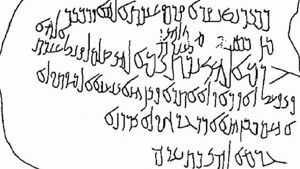
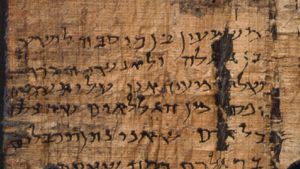
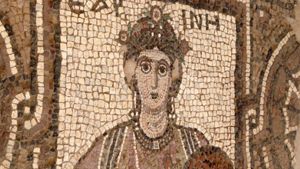
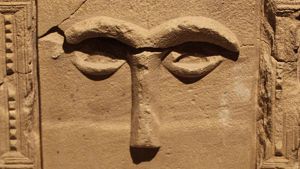
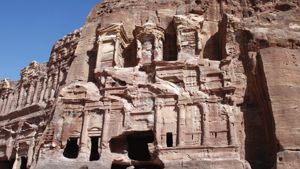
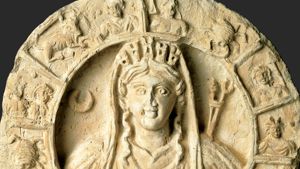
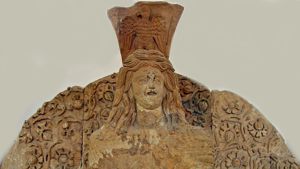

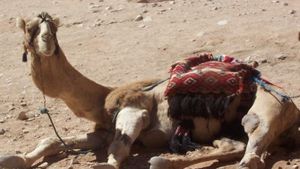
Page Discussion
Membership is required to comment. Membership is free of charge and available to everyone over the age of 16. Just click SignUp, or make a comment below. You will need a user name and a password. The system will automatically send a code to your email address. It should arrive in a few minutes. Enter the code, and you are finished.
Members who post adverts or use inappropriate language or make disrespectful comments will have their membership removed and be barred from the site. By becoming a member you agree to our Terms of Use and our Privacy, Cookies & Ad Policies. Remember that we will never, under any circumstances, sell or give your email address or private information to anyone unless required by law. Please keep your comments on topic. Thanks!